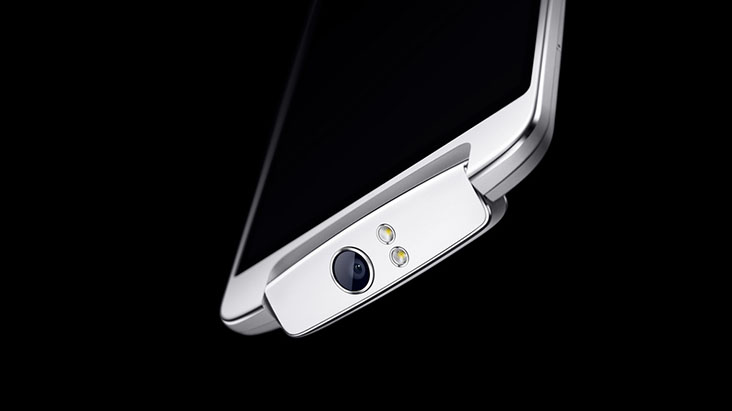As the battle for specs dominance continues, smartphone makers have started focusing their efforts on one particular aspect of their phones: the camera. We’ve seen it on the 41mp shooter of the Nokia Lumia 1020, the smartphone/camera hybrid that is the Samsung Galaxy S4 Zoom, and the detachable Sony DSC-QX100 and QX10 lens cameras. However, budget-minded devices from Chinese OEMs have typically taken a generic approach, combining competitive specs at affordable price points. That is, until the Oppo N1 came along.
Key Features
The Oppo N1 is an interesting smartphone to say the least. It’s massive with its 5.9 inch Full HD IPS display, but powerful as well, sporting a near top-of-the-line Qualcomm Snapdragon 600 CPU. It’s also quite the gaming machine, featuring an Adreno 320 GPU and 2GB of RAM to ensure topnotch gaming and multitasking performance. It comes in 16GB and 32GB storage options, runs Android 4.2 Jelly Bean and Oppo’s Color OS out of the box, and even has a limited CyanogenMod edition.

However, the Oppo N1’s claim to fame is actually its 206-degree rotating camera that allows a single 13mp autofocus camera to function as both the front and rear camera of the device. So no longer will you have to make do with a low resolution fixed focus front camera for selfies. Simply flip the camera over and take advantage of its 6-piece lens, f/2.0 wide aperture, and home-baked Owl imaging processor to capture a crisp and clean image that you’ll probably bury under a filter on Instagram.

It’s not just about the quality of the lens and sensor that make up image quality either, as lighting plays an important role too. The Oppo N1 comes with both a diffused flash and normal flash. The normal flash is better for when your using the camera as a normal point and shoot while the diffused flash casts a softer light and is more ideal for selfies and other shots that are closer to the subject. The camera is also pretty fast to boot, taking only 0.6 seconds to launch from a sleeping screen simply by rotating the device 120 degrees into a ready position.
Another interesting feature aside from the camera is a rear touch panel that makes it easier to operate the Oppo N1 one-handed. The O-Touch panel allows you to scroll, tap, or snap a picture with little effort. This is a great feature since a lot of people would typically have to hold it with both hands to get anything done due to its sheer size.

There’s also the remote O-Click Control, which is a small Bluetooth accessory that can send simple commands to the Oppo N1 up to a distance of 50 meters. It’s small and can be attached to a keyring so you can bring it virtually anywhere. Misplaced the Oppo N1? Simply pull out the O-Click and use it to make your phone sound an alarm to make it easier to find it.
There’s no mistaking the Oppo N1 as a budget smartphone that’s cut corners, because it hasn’t. A lot of attention has gone into the features and overall design of the phone. It features competitive specs housed in an elegant aluminum frame that has undergone a 20-day manufacturing process and 14-step polishing process through more than a dozen suppliers. If there’s anything that can be said against the Oppo N1, it would have to be a lack of LTE support.

The Oppo N1 is set to be released in Chine sometime in December. No news yet as to if and when it will be sold locally since only a few retailers are known to import Oppo handsets. As for how much, it’s priced at 3,498 Chinese Yuan or the equivalent of $570.
Oppo N1 Specs
- 5.9″ Full HD IPS display (1080 x 1920 resolution, 373ppi)
- 1.7GHz quad core Qualcomm Snapdragon 600 processor
- Adreno 320 GPU
- Android 4.2 Jelly Bean with Color OS UI (limited CyanogenMod Edition also available)
- 2GB RAM
- 16/32GB RAM
- 13mp autofocus 206-degree rotating camera
- 3.5G/HSPA+
- WiFi
- Bluetooth
- GPS with A-GPS
- 3,610mAh battery
- Price: 3,498 Chinese Yuan / $570
Via: TalkAndroid



san po available to?